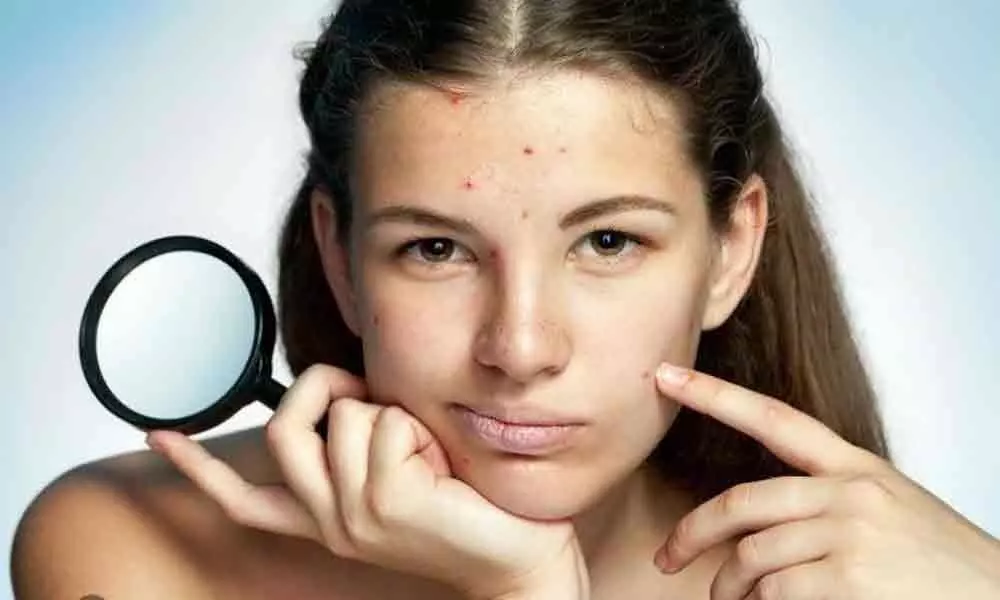Let's understand Acne Map

There's a reason it's called "common acne" -- nearly everyone suffers from a pimple outbreak at some point in life.
What Is Acne?
There's a reason it's called "common acne" -- nearly everyone suffers from a pimple outbreak at some point in life.
It starts when greasy secretions from the skin's sebaceous glands (oil glands) plug the tiny openings for hair follicles (plugged pores). If the openings are large, the clogs take the form of blackheads: small, flat spots with dark centers. If the openings stay small, the clogs take the form of whiteheads: small, flesh-colored bumps. Both types of plugged pores can develop into swollen, tender inflammations or pimples or deeper lumps or nodules. Nodules associated with severe cases of acne are firm swellings below the skin's surface that become inflamed, tender, and sometimes infected.
Although acne remains largely a curse of adolescence, about 20% of all cases occur in adults. Acne commonly starts during puberty between the ages of 10 and 13 and tends to be worse in people with oily skin. Teenage acne usually lasts for five to 10 years, normally going away during the early 20s. It occurs in both sexes, although teenage boys tend to have the most severe cases. Women are more likely than men to have mild to moderate forms into their 30s and beyond.
Acne lesions are most common on the face, but they can also occur on the neck, chest, back, shoulders, and upper arms.
Contrary to popular belief, acne isn't caused by a harmful diet, poor hygiene, or an uncontrolled sex drive. The simple truth is that heredity and hormones are behind most forms of acne. Swearing off chocolate or scrubbing your face 10 times a day won't change your predisposition to this unsightly, sometimes painful, and often embarrassing skin problem.
The Route map of Acne
Acne on your cheeks? Check your phone and pillowcases
It's not just fecal matter. You've probably got traces of E. coli and other bacteria on your phone, too. And anytime you hold your phone to your face, you're spreading that bacteria to your skin, potentially causing more acne. Persistent acne on one side of your faces tends to be due to dirty phones, pillowcases, and other habits like touching your face.
Cleaning your smartphone regularly with a disinfectant wipe can help minimize breakouts. If you're on the phone frequently for work, consider purchasing a Bluetooth headset. Switch out your pillowcases at least once a week.
Try this for cheek acne
Wipe down your smartphone before each use.
Don't bring your phone with you to the bathroom.
Swap out your pillowcase at least once a week.
Acne around your hairline? Look at your hair care
Acne surrounding the hairline on your forehead also shares the name "pomade acne." Pomades are in thick, often mineral oil-based hair products. This ingredient keeps the natural oil or sebum in our hair follicles from exiting. That blockage is what creates a pimple.
If you're routinely finding yourself with pimples along your hairline, the best thing to do is stop using the pomade, wash your face after application, or be diligent about using a clarifying shampoo
Try this for hairline acne
Use noncomedogenic products, which don't contain cocoa butter, coloring, tar, etc.
Try a clarifying shampoo to cleanse your pores and remove any product.
Shield your face with your hand or a washcloth when using sprays or dry shampoo.
Acne on your jawline? It's probably hormonal
Here's where face mapping is actually accurate. Chin and jawline acne is often caused by fluctuations in hormonesTrusted Source, which means a disruption with your endocrine system. It's typically a result of excess androgens, which overstimulate the oil glands and clog pores. Hormones can surge during a menstrual cycle (a week before your period) or may be due to a switch or start with birth control medications.
Hormone imbalance can also be related to diet. You may have heard how diet affects acne, but studies show there's a weak correlation.
Instead, some researchers believe that gut health affects acneTrusted Source because it changes your hormone levels — especially if you're eating high-carb foods or dairy with added hormones. Take a look at your diet and see if cutting back on sugars, white bread, processed foods, and dairy will help reduce acne.
Your dermatologist can also help create and customize a strategy to help combat stubborn acne. For example, while traditional acne prescription regimens may help regular flare-ups, there are specific formulations of birth control pills and topical ointments that help, too.
Try this for jawline and chin acne
Re-evaluate your diet to see if you need to eat less processed foods or dairy.
Research food brands and check if they add hormones to their foods.
Visit a dermatologist for topical treatments to help stubborn acne.
Acne on your forehead and nose? Think oil
If you're getting breakouts in the T-zone area, think oil and stress. A large-scale study of 160 male high school students in Singapore found that high stress doesn't have an effect on oil production, but it can make acne more serious.
Another study, published in the same nonprofit journal Acta Dermato, found that people who woke up tired were more likely to have acne as well.
So, it sounds like stress and sleep start a vicious cycle with acne. If you notice a pattern, try meditating before bed or practicing good sleep hygiene. Listening to music or exercising (even for one minute) are also natural ways to relieve stress.
And remember to avoid touching your forehead. The average person touches their face hundreds of times per dayTrusted Source, spreading oils and dirt directly into the pores.



















